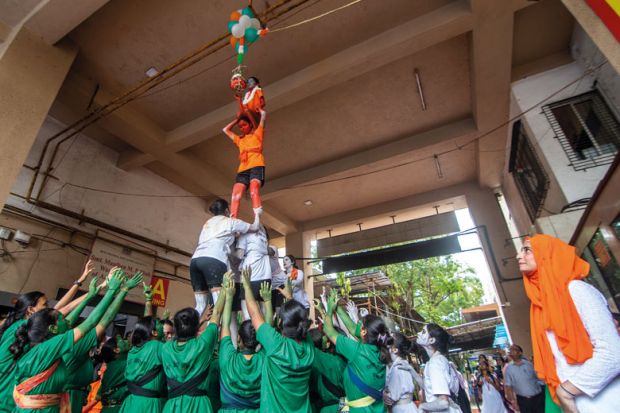India appears on a path towards replacing China as the top supplier of international students in the US, giving American institutions new opportunities and a potentially trickier dependence on helpful government policies.
Chinese students now account for nearly 252,000 US visas, while Indian students have nearly 241,000, according to federal government data.
That narrow gap has arrived suddenly, with the supply from China falling from more than 370,000 at the start of the pandemic, due largely to Covid and political tensions, while enrolments from India roughly doubled in each of the past couple of decades.
India isn’t seen by experts as likely to dominate the US market as China did within the past decade, when it accounted for a third of all international students in the country. But India does loom as a critical customer to satisfy, with government policymakers and institutional leaders in the US facing questions of how they can better meet the preferences of India’s students.
A unifying consideration is value, advised Satyajit Dattagupta, a native of India who came to the US for his undergraduate studies and is now chief enrolment officer at Northeastern University – a nationwide leader in hosting students from India.
“I know a lot of families have questions around return on investment,” Mr Dattagupta said, referring to attitudes in his home country. And a key part of that, he said, is the right of students to remain in their host country for post-degree employment – a measure on which the US doesn’t compare well with other competitor nations.
In the US, that means the federal programme known as Optional Practical Training, which generally lets foreign graduates of US institutions stay in the US for an additional year to take a job related to their training. Nearly half of all students from India currently participate in the programme.
The Trump administration threatened to end Optional Practical Training, while the Biden administration has expanded it, adding more majors to a list that allows the work period to run for three years rather than just one.
Yet right now, said Janet Ilieva, founder of the research consultancy Education Insight, a country such as Australia may look even better, given its recently announced extensions of post-study work to as long as six years for students earning doctorates.
Needed policy changes beyond Optional Practical Training, said Matthew Ruffner, a public policy specialist at Nafsa: Association of International Educators, include eliminating the requirement that students applying for a visa prove they have no intent to remain in the US after graduation, and creating a direct path towards permanent residency for international graduates of US universities.
Also, students from India seeking student visas now face wait times for appointments at US consulates extending to more than a year.
“The US immigration system is outdated and no longer meets the needs of the individuals or the United States,” Mr Ruffner said.
Beyond such political hurdles, Mr Dattagupta said, there are things US universities could do to make themselves more welcoming to students from India. Campus safety is a major consideration, as is the job of ensuring culturally appropriate campus environments, he said.
India also has developed much stronger guidance counselling for its students in recent years, creating robust recruitment opportunities for US institutions that can work well within that system, he said.
Register to continue
Why register?
- Registration is free and only takes a moment
- Once registered, you can read 3 articles a month
- Sign up for our newsletter
Subscribe
Or subscribe for unlimited access to:
- Unlimited access to news, views, insights & reviews
- Digital editions
- Digital access to THE’s university and college rankings analysis
Already registered or a current subscriber? Login








